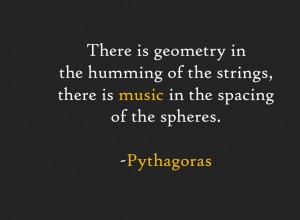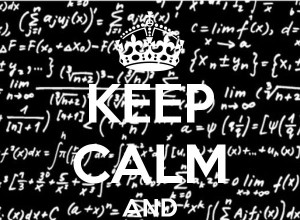INDEED STEPHEN, AND THE ONLY ‘GAME IN TOWN’ AS WELL!
Mathematics is not a careful march down a well-cleared highway, but a journey into a strange wilderness, where the explorers often get lost. Rigour should be a signal to the historian that the maps have been made, and the real explorers have gone elsewhere”~ W. S. Anglin
At the end of this post, marvel at the beauty of M-Theory’s action and find out why it really is called ‘M’-theory. In this post, unlike the last one, I will derive the string world-sheet action for open strings, also in curved space-time, and there are deep differences between closed and open strings. For one, as we saw, the second quantized integral of the D-p-brane partition function for closed strings is:
![Rendered by QuickLaTeX.com \[P_{{\rm{int}}}^{Dp} \equiv \not Z = \sum\limits_{\gamma = 0}^\infty {\underbrace {\int {{{\not D}^{SuSy}}\gamma {{\not D'}^{SuSy}}X{e^{S_{cld}^s}}} }_{{\rm{Topologies}}}} \]](https://www.georgeshiber.com/wp-content/ql-cache/quicklatex.com-6b94ce686f3d93b2aa0ad1ef5d9550c3_l3.png)
where ![]() is the supersymmetry group covariant derivative.
is the supersymmetry group covariant derivative.
and, since:
![Rendered by QuickLaTeX.com \[\begin{array}{c}\delta S_{cld}^s = - \frac{1}{{2\pi \alpha '}}\int_{\partial E_S^5} {{d^2}} \sigma d\,\Omega {\left( {{\phi _{INST}}} \right)^2}{\varepsilon ^{\alpha \beta }}{{\not \partial }_\alpha }{X^\mu }{{\not \partial }_\mu }{\lambda _\nu }\\ = - \frac{1}{{2\pi \alpha '}}\int_{\partial E_S^5} {{d^2}} d\,\Omega {\left( {{\phi _{INST}}} \right)^{ - 1/2}}\sigma \,{{\not \partial }_\mu }X\nu {\left( {{\varepsilon ^{\alpha \beta }}{{\not \partial }_\beta }{X^{^\nu }}{\lambda _\mu }} \right)^{{e^{ - H_3^b}}}}\end{array}\]](https://www.georgeshiber.com/wp-content/ql-cache/quicklatex.com-5bb7f2eeea6ee05059227d9661afdb33_l3.png)
it follows that no topology in the sum is degenerate, and thus the closed string has a solvable action in curved space-time that needs no renormalization. Matters are not that simple for the open string. The main reason being, open strings have their ends attached to D-branes of lower and odd dimensionality: max = 9, and that is key to deriving the open string partition function:
![Rendered by QuickLaTeX.com \[P_{{\mathop{\rm int}} }^{Dp}(op) \equiv \not Z = \sum\limits_\gamma ^\infty {\underbrace {\int {{{\not D}^{SuSy}}\gamma {{\not D}^{SuSy}}X{e^{S_{open}^s}}} }_{{\rm{Brane - worldvolumes}}}} \]](https://www.georgeshiber.com/wp-content/ql-cache/quicklatex.com-6db20bb3df41bf601955c04aa96bb2d2_l3.png)
where ![]() is given by:
is given by:
![]()
with ![]() and
and ![]() the spherical harmonics on
the spherical harmonics on ![]() . Now, realizing that for open strings:
. Now, realizing that for open strings:
![Rendered by QuickLaTeX.com \[P_{{\mathop{\rm int}} }^{Dp}(op) \equiv \not Z = \sum\limits_\gamma ^\infty {\underbrace {\int {{{\not D}^{SuSy}}\gamma {{\not D}^{SuSy}}X{e^{S_{open}^s}}} }_{{\rm{Brane - worldvolumes}}}} \]](https://www.georgeshiber.com/wp-content/ql-cache/quicklatex.com-6db20bb3df41bf601955c04aa96bb2d2_l3.png)
has a genus ![]() suppressed by the factor:
suppressed by the factor:
![]()
it follows that one can derive, given that D-p-branes have conformal invariance, the n-loop level equation of motion with conditions:
![Rendered by QuickLaTeX.com \[\left\{ {\begin{array}{*{20}{c}}{{R_{\mu \nu }} = \, - \frac{1}{4}H_{3,\mu \lambda l}^bH_{3,\nu }^{b,\lambda \rho } + 2{{\not D}_{_\mu }}^{SuSy}{{\left( {{\phi _{INST}}} \right)}^2}{{\not D}_\nu }^{SuSy}{{\left( {{\phi _{INST}}} \right)}^{ - 1/2}}}\\{{{\not D}_\lambda }^{SuSy}{\phi _{INST}}H_{3,\lambda \mu \nu }^b - 4{{\not D}^{SuSy}}{{\left( {{\phi _{INST}}} \right)}^2}}\\{4{{\not D}^{SuSy}}{\phi _{INST}} - 4\left( {{{\not D}^{SuSy}}{{\left( {{\phi _{INST}}} \right)}^2}} \right) = {R_{icci}} + \frac{1}{{12}}{{\left( {H_3^b} \right)}^2}}\end{array}} \right.\]](https://www.georgeshiber.com/wp-content/ql-cache/quicklatex.com-27e33d67c81167c7e927db0eac0437b3_l3.png)
with:
![]()
This all describes a string propagating in curved space-time that must be interpreted as a background derived from non-trivial massless open string modes, and thus pick up an infinite series of ![]() correction terms and an infinite genus correction series – so it follows that the space-time effective action is:
correction terms and an infinite genus correction series – so it follows that the space-time effective action is:
![]()
Now, since open strings can geometrically interact to form closed strings, and since closed strings give rise to the graviton and their gravitational quantum modes, and additionally, since everything gravitates, we get a highly non-trivial warping of space-time – hence, to go further in the analysis, one must consider D-p-branes in closed string theory, since a D-p-brane is a p+1 dimensional world-volume in space-time on which open strings end. The boundary conditions are:
![]()
Let a D-p-brane parallel to the ![]() dimension, and so lives at a specific location in
dimension, and so lives at a specific location in ![]() dimension, we hence get the mode expansion of their fields:
dimension, we hence get the mode expansion of their fields:
![Rendered by QuickLaTeX.com \[{X^\mu } = {x^\mu } + 2{\alpha ^\dagger }p\,\tau d\,\Omega {\left( {{\phi _{INST}}} \right)^2} + \sqrt {2{\alpha ^\dagger }i} \sum\limits_{n \ne 0} {\frac{{a_n^\mu }}{n}} \,{e^{ - {c_{2n}}/{\Upsilon _\kappa }(\cos \varphi )}}\cos \left( {{c_{2n}}\sigma } \right)\]](https://www.georgeshiber.com/wp-content/ql-cache/quicklatex.com-6b2f303c0c124590dd8a0ba02b1b1288_l3.png)
and on the transverse coordinates to the D-p-brane with boundary conditions:
![]()
we get:
![Rendered by QuickLaTeX.com \[\begin{array}{c}{\overline X ^i} = {x^i} + {w^i}\sigma + {\alpha ^\dagger }{p^i}\tau d\,\Omega \,{\left( {{\phi _{INST}}} \right)^i} + \sqrt {\frac{{{\alpha ^\dagger }}}{{2\pi i}}} \sum\limits_{n \ne 0} {\left( {\frac{{a_n^i}}{n}\,} \right.} {e^{ - {c_{2n}}/{\Upsilon _\kappa }(\cos \varphi )}} + \\\frac{{\overline a _n^i}}{n}{e^{ - \,{c_{2n/{\Upsilon _\kappa }}}(\cos \varphi )}}{e^{ - \,{{\left( {{\phi _{INST}}} \right)}^2}}}\left. {\left( {\tau - \sigma } \right)} \right)\end{array}\]](https://www.georgeshiber.com/wp-content/ql-cache/quicklatex.com-77ab2b6838722ff511c115a5e60791c4_l3.png)
And so, one gets the philosophical importance of D-p-branes … they are metaplectic solitons in closed string theory, and hence, by the von Neumann boundary condition, there is a natural coupling of the super-Higgs field ![]() to the world-sheet of a string through its boundary:
to the world-sheet of a string through its boundary:
![Rendered by QuickLaTeX.com \[{S_{open}} = {S_{cld}} + \int\limits_{{\rm{end - points}}} {d\tau } A_\mu ^H{\overline X ^\mu }{e^{ - H_3^b}}d\,\Omega {\left( {{\phi _{INST}}} \right)^{\exp \,({c_{2n}}/{\Upsilon _\kappa }(\cos \varphi )}}\]](https://www.georgeshiber.com/wp-content/ql-cache/quicklatex.com-21c41269205e798ec00a8ad36bfcad24_l3.png)
One finds then that ![]() lives on a p+1 dimensional subspace with a
lives on a p+1 dimensional subspace with a ![]() contribution. Thus, the world-volume action is:
contribution. Thus, the world-volume action is:
![Rendered by QuickLaTeX.com \[S_{Dp}^{WV} = {S_{cld}} + \int\limits_{{\rm{end - points}}} {d\tau } A_\mu ^H{\overline X ^\mu }d\,\Omega {\left( {{\phi _{INST}}} \right)^2}{e^{ - \left( {H_3^b} \right)/{\Upsilon _\kappa }(\cos \varphi )}} + {e^{{c_{2n}}/{\Upsilon _\kappa }(\cos \varphi )}}/H_3^b\]](https://www.georgeshiber.com/wp-content/ql-cache/quicklatex.com-c5318d2dbfb72330936bf269a1858f5f_l3.png)
and by solving, one gets:
![Rendered by QuickLaTeX.com \[\begin{array}{c}S_{Dp}^{WV} = \, - {T_p}\int {{d^{p + 1}}} x\,{e^{ - {\phi _{INST}}}}{\rm{Tr}}\left( {1 + \frac{1}{4}\left( {{F_{\mu \nu }} + d\,\Omega {{\left( {{\phi _{INST}}} \right)}^2}} \right) + {{\left( {2\pi {\alpha ^\dagger }} \right)}^{ - 1}}{b_{\mu \nu }}} \right) \cdot \\\left( {A_\mu ^H + {{\left( {2\pi {\alpha ^\dagger }} \right)}^{ - 1}}{b_{\mu \nu }}} \right) + \frac{1}{2}{{\not D}^{SuSy}}{\Upsilon _\kappa }(\cos \varphi ) - \frac{1}{4}\sum\limits_{i \times j} {\left[ {\Upsilon _{2\kappa }^i(\cos \varphi ,\Upsilon _{2\kappa }^j(\cos \varphi } \right]} \cdot \\\left[ {\Upsilon _{2\kappa }^j(\cos \varphi ),\Upsilon _{2\kappa }^i(\cos \varphi )} \right]\end{array}\]](https://www.georgeshiber.com/wp-content/ql-cache/quicklatex.com-51f02aa13d33f5f8006978ff9c4f93cf_l3.png)
with ![]() being the D-p-brane world-volume tension, and:
being the D-p-brane world-volume tension, and:
![]()
being the Yang-Mills field strength, and by a Paton-Chern-Simons factor, we get:
![Rendered by QuickLaTeX.com \[\left[ {A_\mu ^H,A_\nu ^H} \right] = \sum\limits_{k = 1}^N {A_\mu ^{H,ac}} A_\nu ^{H,cb} - A_\nu ^{H,ac}A_\mu ^{H,cb}\]](https://www.georgeshiber.com/wp-content/ql-cache/quicklatex.com-291c528ba8dc282e90c463543a6e6fb4_l3.png)
and since D-p-branes warp space-time, we can deduce:
![Rendered by QuickLaTeX.com \[\begin{array}{c}\delta {S_{open}} = \, - \frac{1}{{2\pi {\alpha ^\dagger }}}\int\limits_{{\rm{end - points}}} {{d^2}\sigma } {\varepsilon ^{\alpha \beta }}{e^{ - {c_{2n}}/{\Upsilon _\kappa }(\cos \varphi )}}{{\not D}_\alpha }^{SuSy}{\overline X ^\mu }{{\not D}_\beta }^{SuSy}{X^\nu }{{\not \partial }_{\mu \nu }}{\lambda _{\mu \nu }}\\ = \, - \frac{1}{{2\pi {\alpha ^\dagger }}}\int\limits_{{\rm{world - sheets}}} {{d^2}} \sigma \,{{\not \partial }_\alpha }\left( {{\varepsilon ^{\alpha \beta }}d\,\Omega {{\left( {{\phi _{INST}}} \right)}^2}} \right){{\not D}^{SuSy}}{\overline X ^\mu }{\lambda _\nu } = \\ - \frac{1}{{2\pi {\alpha ^\dagger }}}\int\limits_{{\rm{world - volumes}}} {d\tau {{\not \partial }_0}} {X^\nu }{\lambda _\nu }\,{e^{ - H_3^b/S_{cld}^s}}\end{array}\]](https://www.georgeshiber.com/wp-content/ql-cache/quicklatex.com-786fa49387e7ecaa56e2cc0a35443f69_l3.png)
and finally, for the mathematical geeks ‘here’, whenever 2 or more D-branes coincide, there is a Clifford algebraic symmetry whose generators allow us to derive the total action:
![Rendered by QuickLaTeX.com \[\begin{array}{l}{S^{Total}} = \frac{1}{{2\pi {\alpha ^\dagger }12}}\int\limits_{{\rm{world - volumes}}} {{d^{26}}} x\,d\,\Omega {\left( {{\phi _{INST}}} \right)^2}\sqrt {\frac{{ - {g_{\mu \nu }}}}{{ - \gamma }}} \,{e^{ - {c_{2n}}/{\Upsilon _\kappa }(\cos \varphi )}} \cdot \\\left( {{R_{icci}} - 4{{\left( {{{\not D}^{SuSy}}\left( {{\phi _{INST}}} \right)} \right)}^2}} \right) + \frac{1}{{12}}H_{3,\mu \nu \lambda }^bH_3^{b,\mu \nu \lambda }/A_\mu ^H + \sum\limits_{D - p - branes} {S_{Dp}^{WV}} \end{array}\]](https://www.georgeshiber.com/wp-content/ql-cache/quicklatex.com-ee1ece1964f54af749ce713bc472b175_l3.png)
Finally one can see why M-Theory is called ‘M-Theory’, and appreciate the deep philosophical connection of the coupling with the super-Higgs field: because Clifford algebras are a quantization of exterior algebras: applying to Einsteinian space-time’s tangent bundle, their ‘M’-atrices, via Gaussian elimination, allow us to expand ![]() , via Green-functions, and by SuSy, the M-Theory action is:
, via Green-functions, and by SuSy, the M-Theory action is:
![Rendered by QuickLaTeX.com \[{S_M} = \frac{1}{{{k^9}}}\int\limits_{{\rm{world - volumes}}} {{d^{11}}} \sqrt {\frac{{ - {g_{\mu \nu }}}}{{ - \gamma }}} {T_p}^{10}{\mkern 1mu} d{\mkern 1mu} \Omega {\left( {{\phi _{INST}}} \right)^{26}}\left( {{R_{icci}} - A_\mu ^H\frac{1}{{48}}G_4^2} \right) + \sum\limits_{Dp} {\not D_\mu ^{SuSy}} {e^{ - H_3^b}}/S_{Dp}^{WV} + \sum\limits_{Dp} {\not D_\nu ^{SuSy}} {e^{H_3^b}}/S_{Dp}^{SV}\]](https://www.georgeshiber.com/wp-content/ql-cache/quicklatex.com-fad4e32f2dd760c5240235fd46ceb3d9_l3.png)
with ![]() the kappa symmetry gravitonic term. That is where the ‘M’ comes from, and why it unifies all string theories and is the only complete, categorical ‘theory-of-everything’: you have the bosons, fermions and a Higgs-field coupling in ONE action-principle that includes the graviton, and hence describes quantum gravity: NO other Grand Unification Theory/Theory Of Everything can derive such an action with such ‘completeness’: in fact, any theory that does is provably model-theoretically isomorphic to M-Theory!
the kappa symmetry gravitonic term. That is where the ‘M’ comes from, and why it unifies all string theories and is the only complete, categorical ‘theory-of-everything’: you have the bosons, fermions and a Higgs-field coupling in ONE action-principle that includes the graviton, and hence describes quantum gravity: NO other Grand Unification Theory/Theory Of Everything can derive such an action with such ‘completeness’: in fact, any theory that does is provably model-theoretically isomorphic to M-Theory!
An equation means nothing to me unless it expresses a thought of God. ~ Srinivasa Ramanujan



